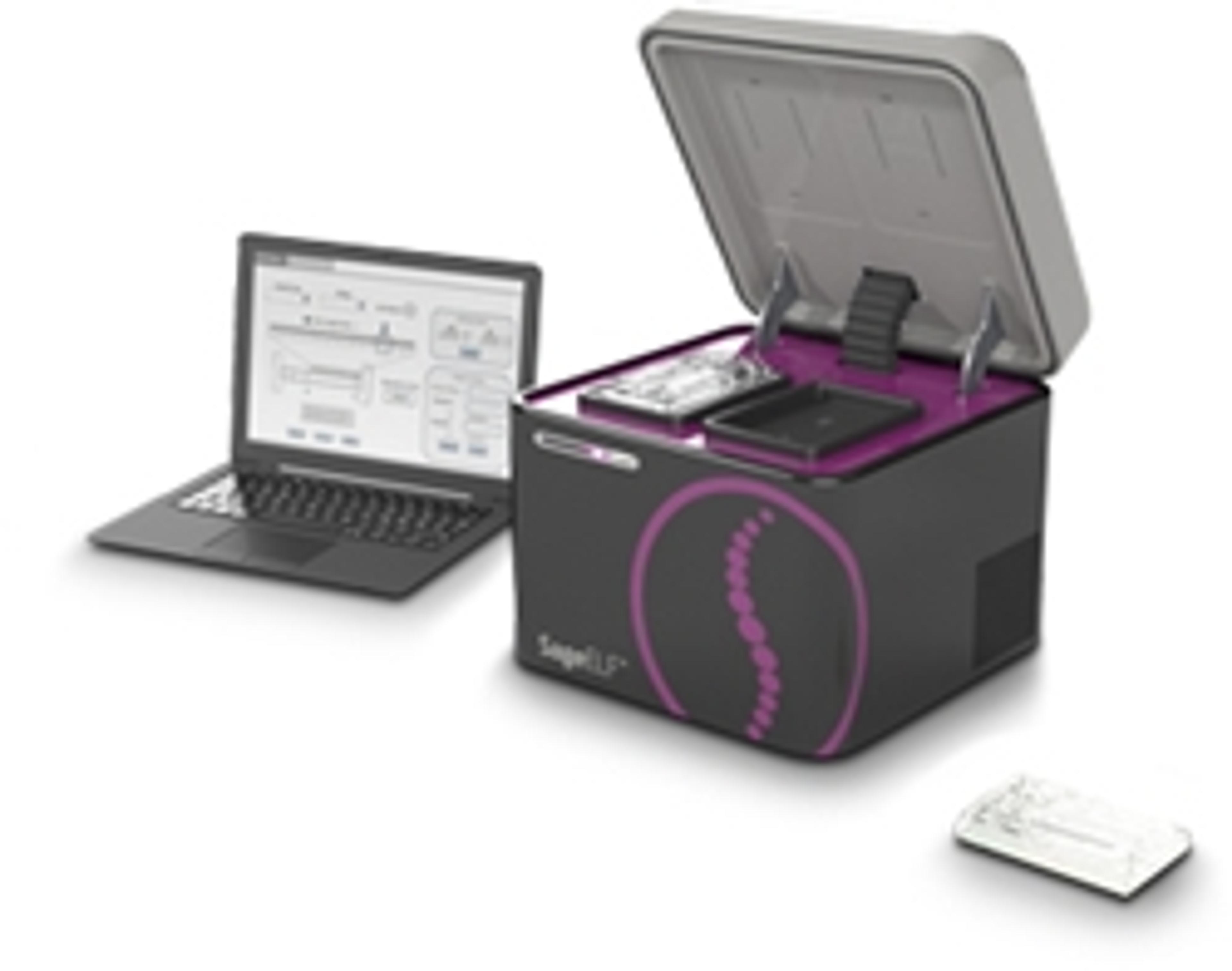Sage Science Launches Proteomics Early Access Program for SageELF Instrument
31 Mar 2015
Sage Science, a developer of products for improving sample preparation processes in life science applications, today announced the launch of a proteomics early access program for its SageELF technology. SageELF is a protein sample prep tool useful for biomarker discovery, protein profiling, shotgun proteomics, quality control of biotherapeutics, and more.
With this early access program, Sage Science expands the applications of the SageELF instrument from whole-sample DNA fractionation to protein fractionation for proteomic workflows. The SageELF generates 12 contiguous fractions from a protein sample in a fully automated process that is more sensitive and reproducible than manual 1D gels. The tool can be used to reduce sample complexity, enrich for rare proteins, and improve recovery of all proteins in a sample.
“SageELF has been very well received by users in the genomics community, and now we are eager to see what users in the proteomics community will accomplish with it,” said Todd Barbera, Chief Executive Officer of Sage Science. “We have already seen remarkable results with antibody experiments and biomarker discovery studies, and we anticipate that our early access researchers will demonstrate many other creative uses and high-quality data with this unique technology.”
The SageELF, short for Electrophoretic Lateral Fractionator, automatically electrophoreses samples and elutes proteins from the entire gel lane into 12 elution modules. Users simply load their sample, start the run, and pipette out the fractions later. Unlike in-gel digestion, in which some peptides never leave the gel, the whole protein sample is electrophoresed into the elution modules.
Scientists interested in joining the SageELF early access program can visit http://www.sagescience.com/elf-protein/ for more information. The SageELF instrument will also be on display at the upcoming annual meeting of the Association of Biomolecular Resource Facilities (ABRF) in booth #323 and at the Experimental Biology conference in booth #1065.

